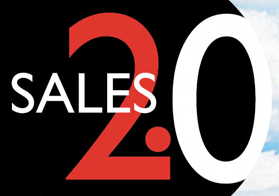Sales 2.0 Gains Steam As Data Shows Payoffs In Conversion Rates, Shorter Sales Cycles
- Written by Andrew Gaffney
- Published in Feature Articles
 With research showing that companies deploying next generation sales automation tools are realizing higher lead conversion rates and shortened sales cycle times, interest in the Sales 2.0 movement continues to grow. More than 300 executives gathered in Boston last month for the latest in the series of Sales 2.0 conferences, which featured presentations from executives at Salesforce.com, Hubspot and Brainshark among others.
With research showing that companies deploying next generation sales automation tools are realizing higher lead conversion rates and shortened sales cycle times, interest in the Sales 2.0 movement continues to grow. More than 300 executives gathered in Boston last month for the latest in the series of Sales 2.0 conferences, which featured presentations from executives at Salesforce.com, Hubspot and Brainshark among others.

Polly Sumner, Chief Adoption Officer at salesforce.com, presented the opening keynote address at the Sales 2.0 East event, and shared insights into the “forensics” salesforce.com uses to analyze potential deployment gaps for its customers, as well as how the company is using the new Chatter collaboration platform to reduce internal email volume by up to 30%.
In another spin on the application of Sales 2.0 techniques, Mark Roberge, VP of Sales at Hubspot, shared insights into how the company has expanded to more than 60 salespeople and over 2,800 customers in just three years. Roberge also presented examples of how the fast growing company focuses its team on the key metric of Customer Lifetime Value divided by Cost of Customer Acquisition (CLTV/COCA). “That ratio is a big metric in SaaS and applies to most sales organizations. The mistake we made early on – and that perhaps others make – is putting too much emphasis on the initial revenue stream and not putting enough emphasis on what it took to get that revenue stream and how it evolved over time,” Roberge said.
By taking a metrics-based approach to revenue generation, Roberge pointed out that Hubspot is able to take a longer-term view into profitable growth. “Sales 2.0 has helped us make smarter decisions on which leads we prioritize and how much effort we put into them,” he said. “While it makes us feel good to focus on leads that move aggressively into the pipeline, those might not become big deals over time. There are other deals that are a hell of a time to get in and through the pipeline. But once we get them they’re extremely valuable deals.”
Helping to quantify the impact of Sales 2.0 tools and techniques, Peter Ostrow, Research Director of Sales Effectiveness Practice, at Aberdeen Group, presented data from the company’s new report, “Optimizing Lead-to-Win: Shrinking the Sales Cycle and Focusing Closers on Sealing More Deals.” Highlights from that report included companies deemed as Best-in-Class showing a lead conversion rate of 44% versus 26% for Industry Average companies, and only 11% for so-called Laggard companies. Ostrow also shared data showing Best-in-Class companies had seen an 8.4% reduction in sales cycle times.

